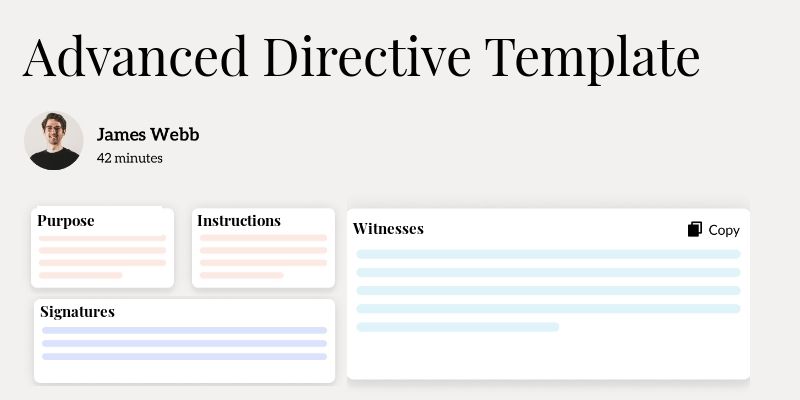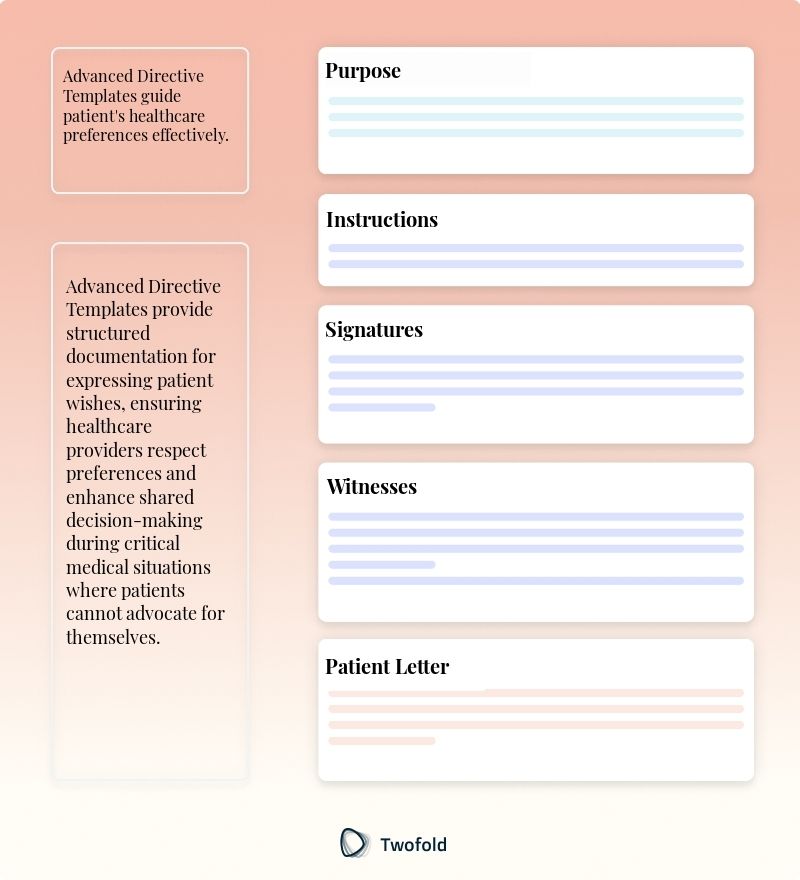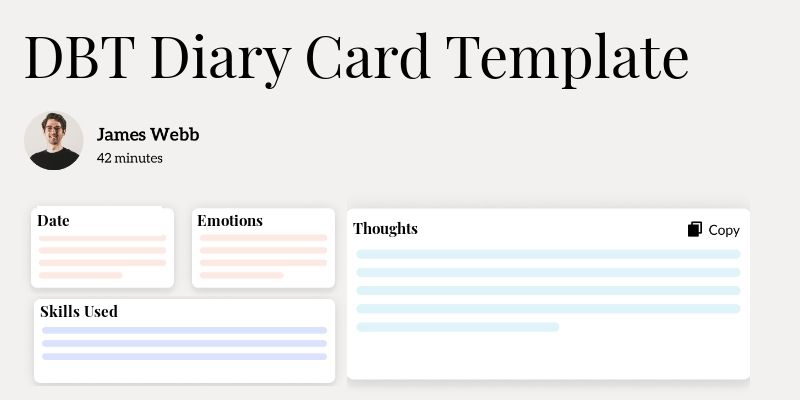
Advanced Directive Template
Have you ever been caught up in the intricacies of medical documentation, with paperwork that never seems to end? You're not alone. For those dealing with complex medical codes, navigating through endless details is a common challenge. Today, we're zeroing in on something that's often misunderstood yet so vital—Advanced Directive Templates. Let's dig into how you can streamline your process, making documentation more efficient and less of a headache.
What Is an Advanced Directive Template?
An Advanced Directive Template is a structured form used in the medical field to document a patient's choices regarding health care treatment options in situations where they might be unable to communicate their preferences. It serves as a guide for healthcare providers when critical decisions need to be made. These templates are crucial for outlining a patient's wishes concerning treatments, life support, and other medical interventions.
With a well‑designed template, healthcare professionals can ensure that the care provided aligns with the patient's desires. This is particularly important in emergency situations where timely decisions are critical, and patient consent cannot be directly obtained.
Key Components of an Advanced Directive
The essential elements of an Advanced Directive Template consist of various components that comprehensively cover a patient's healthcare preferences.
- Patient identification details
- Designation of healthcare proxy
- Specific medical interventions (such as resuscitation, feeding tubes)
- Organ donation preferences
- Review and update logs
- Signature of the patient and witnesses
- Legal compliance statements

How to Use an Advanced Directive Template: Step-by-Step Process
Step 1: Access the Template
Begin by obtaining the advanced directive template from a trusted medical institution or official healthcare provider.
Step 2: Fill Out Personal Information
Enter the patient's full name, date of birth, and medical identification number for accurate record‑keeping.
Step 3: Appoint a Healthcare Proxy
Select and document a healthcare proxy who will make decisions when the patient is incapacitated.
Step 4: Specify Treatment Preferences
Detail any specific medical treatments or interventions the patient wishes to accept or refuse.
Step 5: Include Organ Donation Preferences
State whether the patient consents to organ donation, specifying any conditions if applicable.
Step 6: Sign and Witness the Document
Ensure the patient signs the directive and include the signatures of two witnesses to validate the document.
Step 7: File and Update Regularly
Submit the directive to relevant healthcare providers and review periodically for any necessary updates.
Benefits of an Advanced Directive
Benefit | Description |
|---|---|
Clarity in Care | Ensures patient's treatment preferences are explicitly recorded and understood by caregivers. |
Legal Protection | Offers legal documentation that protects both the patient and the provider in treatment decisions. |
Stress Reduction | Alleviates family burden by stating clear directives, thus reducing emotional stress during crises. |
Time Efficiency | Speeds up the decision-making process in emergencies, improving response time and care quality. |
Stakeholders in Advanced Directive
Various parties play important roles in the creation and execution of an advanced directive:
- Patients: The focal point, as their preferences form the basis of the directive. For instance, John, a 70-year-old with chronic illness, ensures his wishes are respected through this document.
- Family Members: Often participate in discussions to align family understanding with the patient’s wishes—take Sarah, who regularly consults with her parents on their directives.
- Healthcare Providers: Use the document as a guide during treatment, like Dr. Lee, who always reviews the directive before making critical care decisions.
- Legal Advisors: Ensure the legality and compliance of the document, such as an attorney like Karen who ensures directives follow state law.
Example of an Advanced Directive PDF
An example PDF of an advanced directive encapsulates all components in a consolidated format that is easy to reference during medical evaluations.
Real-World Use Cases: Practical Impact of the Advanced Directive Template
Advanced Directive templates play pivotal roles across various scenarios, offering significant benefits:
- During a critical surgery, a patient's directive guides medical teams like in the case of Emily, whose family discussed her non-resuscitation order.
- In hospice care, templates facilitate smooth transitions, with caregivers using directives to honor end-of-life wishes similar to Mr. Thompson's peaceful departure.
- Hospital ETHICS committees, such as the one at West Hospital, resolve dilemmas more clearly by referencing each patient's directive.
- Nursing homes integrate these templates to individualize patient care plans, reflected in Bethany’s approach to care at Golden Pines.
Conclusion
Advanced Directive Templates serve as indispensable tools in the health care field, offering clarity and guiding medical decisions aligned with patient preferences. They ensure legal compliance and ease emotional stress for families by providing a clear action plan during medical emergencies. Adopting these templates is a proactive step towards comprehensive healthcare planning.
Disclaimer: This article is for informational purposes only and does not constitute legal or medical advice. Always consult professional guidelines and regulatory bodies for specific compliance requirements.

Dr. Danni Steimberg
Dr. Danni Steimberg is a pediatrician at Schneider Children’s Medical Center with extensive experience in patient care, medical education, and healthcare innovation. He earned his MD from Semmelweis University and has worked at Kaplan Medical Center and Sheba Medical Center.
Advance directives fall short when they capture ideals but not action. This method turns patient values into clear, bedside‑ready instructions—and makes sure the right people can find them fast.
- Translate Values → Orders: Pair each plain-language value (comfort, independence, longevity) with concrete choices—DNR/DNI, ventilation (time-limited trial vs none), artificial nutrition/hydration, hospitalization vs comfort-focused care.
- Lock In the Decision-Maker: List primary and alternate health-care proxies with 24/7 contact info, note that they’ve agreed to serve (initials), and include a brief “escalation order” (who to call first).
- Make It Current & Findable: Add a version date and “supersedes prior” line, a witness/notary block (state-specific), and a distribution checklist (proxy, PCP, facility, EMR flag). If applicable, cross-reference a POLST/MOLST so preferences become medical orders in acute settings.
Frequently Asked Questions
Reduce burnout,
improve patient care.
Join thousands of clinicians already using AI to become more efficient.

DBT Diary Card Template
Discover practical DBT Diary Card Template templates to enhance your documentation efficiency.

Patient Chart Template
Discover practical Patient Chart templates to enhance your documentation efficiency.

Appointment Reminder Template
Discover practical Appointment Reminder templates to enhance your documentation efficiency.

